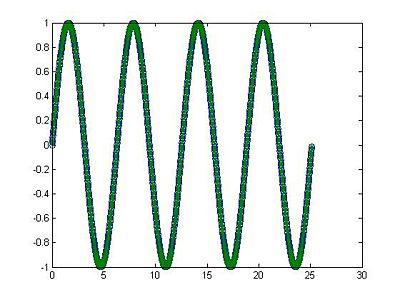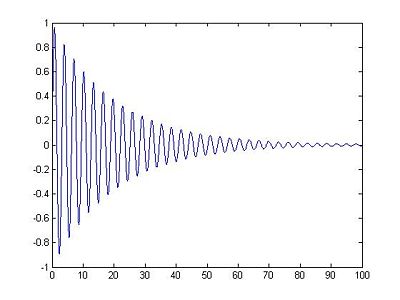(→Periodic signals) |
|||
| (9 intermediate revisions by 2 users not shown) | |||
| Line 1: | Line 1: | ||
| + | =Periodic versus non-periodic functions ([[Homework_1_ECE301Fall2008mboutin|hw1]], [[ECE301]])= | ||
| + | <span style="color:green"> Read the instructor's comments [[hw1periodicECE301f08profcomments|here]]. </span> | ||
| + | |||
==Continuous Time== | ==Continuous Time== | ||
| − | |||
| + | ==Periodic== | ||
A signal is periodic if there exists some T>0 such that: | A signal is periodic if there exists some T>0 such that: | ||
<math> x(t) = x(t+T) </math> | <math> x(t) = x(t+T) </math> | ||
-Consider <math> x(t) = sin(t) </math> from 0 to 8pi | -Consider <math> x(t) = sin(t) </math> from 0 to 8pi | ||
| − | <center>[[Image: | + | <center>[[Image:sin_ECE301Fall2008mboutin.jpg|400px]]</center> |
| − | |||
| − | |||
| − | -Consider <math> x(t) = sin( | + | ==Non-Periodic== |
| − | <center>[[Image: | + | A signal is NOT periodic if the converse is true, there DOESN'T exists some T>0 such that: |
| + | x(t) = x(t+T) | ||
| + | |||
| + | -Consider <math> x(t) = e^{-t/20} * sin(2t) </math> | ||
| + | <center>[[Image:Sin_decr_ECE301Fall2008mboutin.jpg|400px]]</center> | ||
Latest revision as of 07:08, 14 April 2010
Contents
Periodic versus non-periodic functions (hw1, ECE301)
Read the instructor's comments here.
Continuous Time
Periodic
A signal is periodic if there exists some T>0 such that: $ x(t) = x(t+T) $
-Consider $ x(t) = sin(t) $ from 0 to 8pi

Non-Periodic
A signal is NOT periodic if the converse is true, there DOESN'T exists some T>0 such that: x(t) = x(t+T)
-Consider $ x(t) = e^{-t/20} * sin(2t) $


